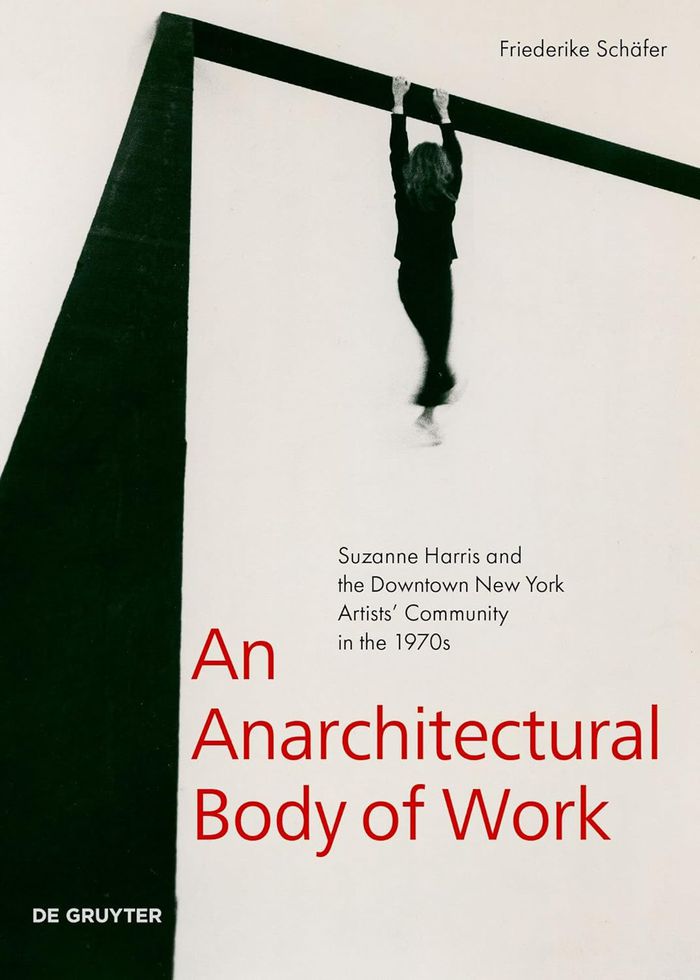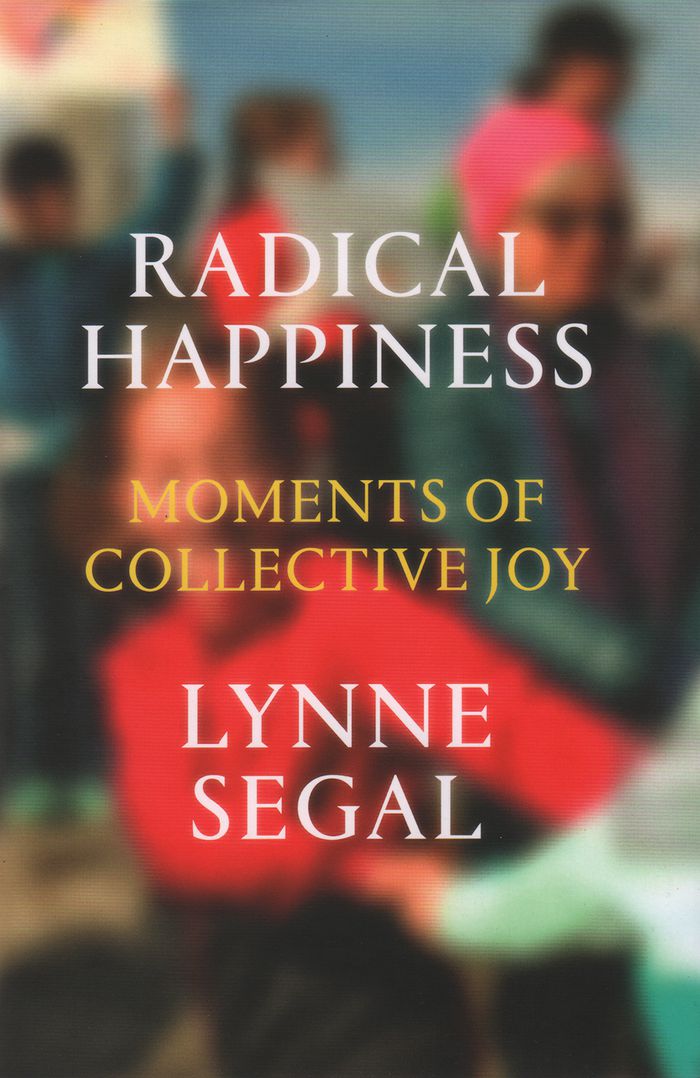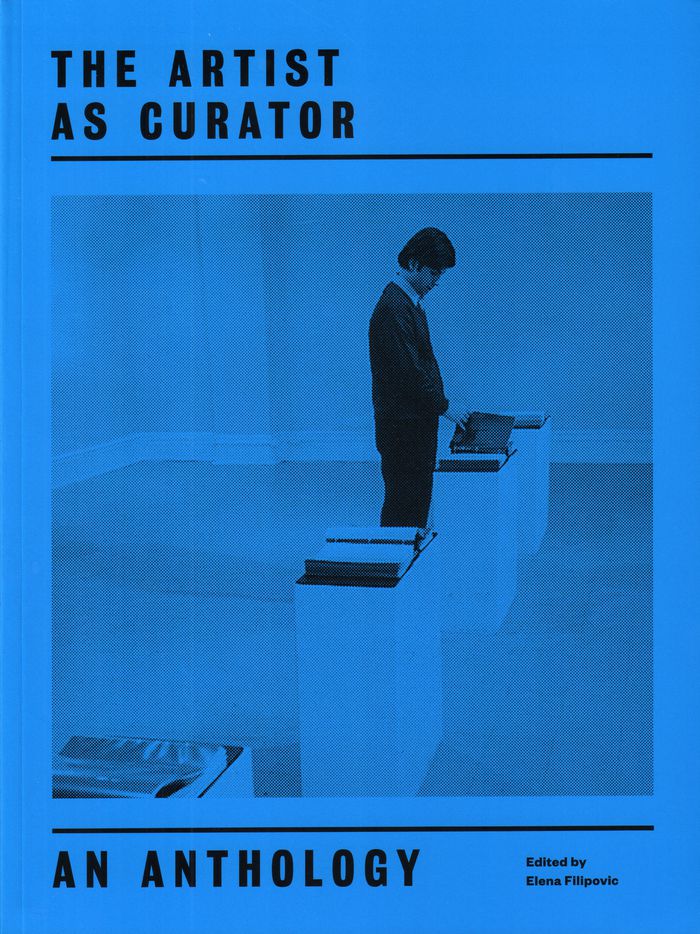$105.00
(disponible sur commande)
Résumé:
This is the first book on the boundary-pushing practice of the artist, dancer, and educator Suzanne Harris (1940–1979). Harris was a protagonist in key avant-garde projects of the downtown New York City artists’ community in the 1970s (the Anarchitecture group, 112 Greene Street, FOOD, The Natural History of the American Dancer, Heresies); yet her own oeuvre fell into(...)
An anarchitectural body of work: Suzanne Harris and the downtown New York artists' community in the 1970s
Actions:
Prix:
$105.00
(disponible sur commande)
Résumé:
This is the first book on the boundary-pushing practice of the artist, dancer, and educator Suzanne Harris (1940–1979). Harris was a protagonist in key avant-garde projects of the downtown New York City artists’ community in the 1970s (the Anarchitecture group, 112 Greene Street, FOOD, The Natural History of the American Dancer, Heresies); yet her own oeuvre fell into abeyance. Harris’ postminimalist work broke the mold of art categories, (feminist) art practices, art spaces, and the common notion of space. By transcending sculpture and dance, she created ephemeral, site-specific installations, which she conceived as body-oriented choreographic situations. Her approach of sensory awareness led to a holistic philosophy of space, which again is paradigmatic for a materialist approach to (social) space that emerged in the arts at the time.
livres
The force of listening
$21.95
(disponible sur commande)
Résumé:
"The force of listening" explores the role of listening at the intersection of contemporary art and activism, and asks what transformations listening might facilitate in the world. Written as a constructed dialogue, "The force of listening" draws from conversations with artists, activists and political thinkers which took place during 2013–14, in the aftermath of the wave(...)
The force of listening
Actions:
Prix:
$21.95
(disponible sur commande)
Résumé:
"The force of listening" explores the role of listening at the intersection of contemporary art and activism, and asks what transformations listening might facilitate in the world. Written as a constructed dialogue, "The force of listening" draws from conversations with artists, activists and political thinkers which took place during 2013–14, in the aftermath of the wave of protests and occupations against austerity. Artists Ayreen Anastas and Rene Gabri, media theorist Nick Couldry, philosopher Adriana Cavarero and members of Ultra-red and Precarious Workers Brigade as well as feminist consciousness-raising groups meet on the page to tackle questions of listening, attention and interconnection, collectivity, solidarity and resonance, the politics of the voice and the ethics of listening, the challenges of institutional frameworks and their reflections on the Occupy movement.
livres
mai 2017
Théorie de l’art
Design in a frame of emotion
$24.00
(disponible en magasin)
Résumé:
A conversation about design, filmmaking, Afrofuturism, world-building, and other topics with Hannah Beachler, Academy-Award-winning production designer of "Black Panther". Hannah Beachler is known as an award-winning production designer, but she tells an audience that she considers herself to be more of a story designer. As film stills and concept art from a few of those(...)
février 2021
Design in a frame of emotion
Actions:
Prix:
$24.00
(disponible en magasin)
Résumé:
A conversation about design, filmmaking, Afrofuturism, world-building, and other topics with Hannah Beachler, Academy-Award-winning production designer of "Black Panther". Hannah Beachler is known as an award-winning production designer, but she tells an audience that she considers herself to be more of a story designer. As film stills and concept art from a few of those stories--"Moonlight", "Miles Ahead", "Creed", "Lemonade", and "Black Panther"--flash across a screen, Beachler engages in a meandering conversation with Jacqueline Stewart and Toni L. Griffin about set building and curation, urban design, location scouting, Afrofuturism, fictional histories, and Black feminist narratives, and illustrates her role: a designer behind on-screen tableaux that provide not only visual feasts of artistry and imagination, but also intimate spaces of emotion, humanity, and constructed memory.
$35.99
(disponible sur commande)
Résumé:
Why are we so obsessed by the pursuit of happiness? With new ways to measure contentment we are told that we have a right to individual joy. But at what cost? In an age of increasing individualism, we have never been more alone and miserable. But what if the true nature of happiness can only be found in others? In Radical Happiness, leading feminist thinker Lynne Segal(...)
Radical happiness: the search for movements of collective joy
Actions:
Prix:
$35.99
(disponible sur commande)
Résumé:
Why are we so obsessed by the pursuit of happiness? With new ways to measure contentment we are told that we have a right to individual joy. But at what cost? In an age of increasing individualism, we have never been more alone and miserable. But what if the true nature of happiness can only be found in others? In Radical Happiness, leading feminist thinker Lynne Segal believes that we have lost the art of radical happiness— the art of transformative, collective joy. She shows that only in the revolutionary potential of coming together it is that we can come to understand the powers of flourishing. Radical Happiness is a passionate call for the re-discovery of the political and emotional joy that emerge when we learn to share our lives together.
Théorie/ philosophie
$39.95
(disponible sur commande)
Résumé:
Taking that ambiguous thing we call “the exhibition” as a critical medium, artists have often radically rethought conventional forms of exhibition making. "The Artist as Curator: An Anthology", born out of a series of essays originally published in Mousse, surveys seminal examples of such artist-curated exhibitions from the postwar to the present, examined by the world’s(...)
The artist as curator: an anthology
Actions:
Prix:
$39.95
(disponible sur commande)
Résumé:
Taking that ambiguous thing we call “the exhibition” as a critical medium, artists have often radically rethought conventional forms of exhibition making. "The Artist as Curator: An Anthology", born out of a series of essays originally published in Mousse, surveys seminal examples of such artist-curated exhibitions from the postwar to the present, examined by the world’s foremost curators and illustrated with rare documents and illustrations. Artists featured include the Avant-Garde Argentinian Visual Artists Group; Mel Bochner; Marcel Broothaers; John Cage; Judy Chicago, Miriam Schapiro and the CalArts Feminist Art Program; Collaborative Projects Inc. (Colab); Liam Gillick and Philippe Parreno; Group Material; Richard Hamilton and Victor Pasmore; David Hammons; Martin Kippenberger; Mark Leckey; Hélio Oiticica; Walid Raad and Akram Zaatari; Martha Rosler; and Andy Warhol, among other examples drawn from around the globe.
$85.00
(disponible sur commande)
Résumé:
Stemming from the timely spring 2019 group exhibition at the Migros Museum für Gegenwartskunst, ''Producing Futures: A Book on Post-Cyber-Feminisms'' focuses on feminist concerns in the post-internet era. While in the 1990s cyber-feminism—a term coined by artist collective VNS Matrix—celebrated the cyberspace as a place of liberation and empowerment, one is now confronted(...)
Producing futures: a book on post-cyber feminisms
Actions:
Prix:
$85.00
(disponible sur commande)
Résumé:
Stemming from the timely spring 2019 group exhibition at the Migros Museum für Gegenwartskunst, ''Producing Futures: A Book on Post-Cyber-Feminisms'' focuses on feminist concerns in the post-internet era. While in the 1990s cyber-feminism—a term coined by artist collective VNS Matrix—celebrated the cyberspace as a place of liberation and empowerment, one is now confronted with the fact that, rather, it multiplied and enforced existing hierarchies and power structures. Thus the question remains of whether the cyberspace can be appropriated when striving for gender justice, emancipation and social equality. As the virtual world(s) and real life are increasingly merging, artists reflect on and productively alienate the tools and platforms on hand to produce a future that is worth living in—offline and online.
Théorie de l’art
$29.99
(disponible sur commande)
Résumé:
Louise Bourgeois: The Spider, the Mistress and the Tangerine is a mesmerizing cinematic journey inside the world of the modern art legend and feminist icon. As an artist, Louise Bourgeois always worked on her own vigorously inventive and disquieting terms. In 1982, at the age of 71, she became the first woman honored with a major retrospective at The Museum of Modern Art.(...)
Louise Bourgeois: the spider, the mistress and the tangerine
Actions:
Prix:
$29.99
(disponible sur commande)
Résumé:
Louise Bourgeois: The Spider, the Mistress and the Tangerine is a mesmerizing cinematic journey inside the world of the modern art legend and feminist icon. As an artist, Louise Bourgeois always worked on her own vigorously inventive and disquieting terms. In 1982, at the age of 71, she became the first woman honored with a major retrospective at The Museum of Modern Art. She went on to create her most powerful and persuasive work--the massive spider sculptures that have since been exhibited all over the world. Filmed with unparalleled access between 1993 and 2007, this documentary delicately sheds light on the ways in which her childhood traumas and memories became embodied in objects and installations. An intimate and human engagement with an artist’s world, this documentary is a comprehensive and dramatic work of creativity and revelation.
DVD vidéo
Grandma's story
$13.95
(disponible sur commande)
Résumé:
The storyteller is the living memory of her time: at once an oracle, weaver, healer, warrior, witch, protectress, teacher and great mother. Her powers are to do with passing on – not only the stories but transmission itself: "what grandma began, granddaughter completes and passes on to be further completed." In contrast to the idea that a story is "just a story",(...)
Grandma's story
Actions:
Prix:
$13.95
(disponible sur commande)
Résumé:
The storyteller is the living memory of her time: at once an oracle, weaver, healer, warrior, witch, protectress, teacher and great mother. Her powers are to do with passing on – not only the stories but transmission itself: "what grandma began, granddaughter completes and passes on to be further completed." In contrast to the idea that a story is "just a story", pioneering postcolonial feminist theorist and filmmaker Trinh T. Minh-ha recodes ideas about truth and fantasy to tell a different story about power, civilisation, history, medicine and magic. "Grandma’s Story" shows how creative speech is connected to women’s powers of enchantment, drawing upon and speaking with storytellers including Theresa Hak Kyung Cha, Clarice Lispector, Maxine Hong Kingston, Leslie Marmon Silko and Zora Neale Hurston – all who may be known as ‘'she who breaks open the spell'’.
Social
$33.95
(disponible en magasin)
Résumé:
In this publication, Sarah Jane Cervenak engages with Black artists and writers who create alternative spaces for Black people to gather free from interruption or regulation. Drawing together Black feminist theory, critical theories of ecology and ecoaesthetics, and Black aesthetics, Cervenak shows how novelists, poets, and visual artists such as Gayl Jones, Toni(...)
Black gathering: Art, ecology, ungiven life
Actions:
Prix:
$33.95
(disponible en magasin)
Résumé:
In this publication, Sarah Jane Cervenak engages with Black artists and writers who create alternative spaces for Black people to gather free from interruption or regulation. Drawing together Black feminist theory, critical theories of ecology and ecoaesthetics, and Black aesthetics, Cervenak shows how novelists, poets, and visual artists such as Gayl Jones, Toni Morrison, Clementine Hunter, Samiya Bashir, and Leonardo Drew advance an ecological imagination that unsettles Western philosophical ideas of the earth as given to humans. In their aestheticization and conceptualization of gathering, these artists investigate the relationships among art, the environment, home, and forms of Black togetherness. Cervenak argues that by offering a formal and conceptual praxis of gathering, Black artists imagine liberation and alternative ways of being in the world that exist beyond those Enlightenment philosophies that presume Black people and earth as given to enclosure and ownership.
Théorie de l’art
$36.00
(disponible sur commande)
Résumé:
In "Design by accident," Alexandra Midal declares the autonomy of design, in and on its own terms. This meticulously researched work proposes not only a counterhistory but a new historiography of design, shedding light on overlooked historical landmarks and figures while reevaluating the legacies of design's established luminaries from the nineteenth century to the(...)
Design by accident: for a new history of design
Actions:
Prix:
$36.00
(disponible sur commande)
Résumé:
In "Design by accident," Alexandra Midal declares the autonomy of design, in and on its own terms. This meticulously researched work proposes not only a counterhistory but a new historiography of design, shedding light on overlooked historical landmarks and figures while reevaluating the legacies of design's established luminaries from the nineteenth century to the present. Midal rejects both linear narratives of progress and the long-held perception of design as a footnote to the histories of fine art and architecture. By weaving critical analysis of the canon of design history and theory together, with special attention to the writings of designers themselves, she draws out the nuances and radical potentials of the discipline—from William Morris's ambivalence toward industry, to Catharine Beecher's proto-feminist household appliances, to the Bauhaus's Expressionist origins, and the influence of Herbert Marcuse on Joe Colombo.
Théorie du design








